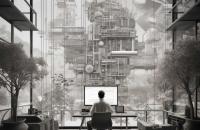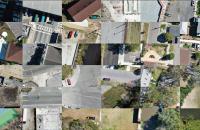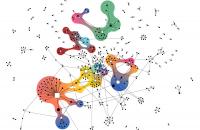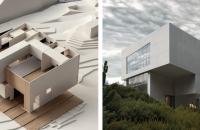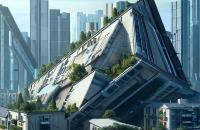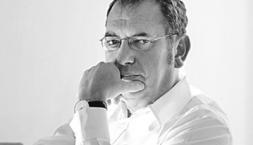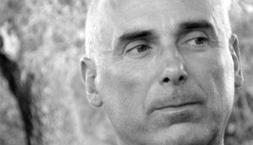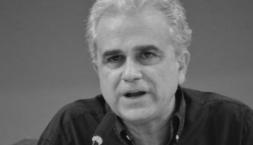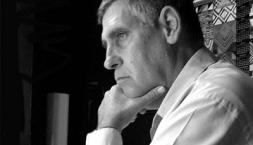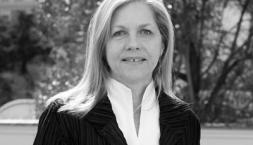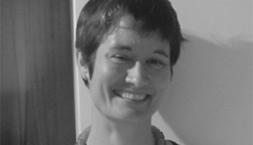Professor in Residence, Department of Architecture, GSD, Harvard University, Cambridge MA, USA
The Japan National Stadium: Between Architectural Bigness and Urban Smallness
VOLUME 9/2024 - Issue 1 , Pages: 1 - 21 published: 2024-06-19In 2012, Zaha Hadid Architects (ZHA) was announced winner for the competition to design the Japan National Stadium, the main venue for the 2020 Olympics. Over the years, the project faced a range of controversy that ended with the scrapping of ZHA’s proposal in 2015, and the adoption of a non-iconic stadium designed by Kengo Kuma, one that is more integrated with its context. The critique against ZHA’s project involved Japanese architects led by Fumihiko Maki; it stemmed from the urban consequences such an architectural object would have, bringing the protagonists into conflict at the very intersection of their nature as architects and urban planners. This paper aims to analyze the reasons behind this controversy, which lies within the theoretical debate between a phenomenological approach on one hand and the autonomy of design on the other. Despite her established status as an archistar, Hadid’s proposal seemed to suffer the side effects of Koolhaasian “bigness”; the heritage discipline of preserving the built and natural environment of the neighborhood suddenly became a matter such an important structure had to deal with.
Object as Portal: Actual-Virtual Multi-Space of Temporary Urban Games Space
VOLUME 9/2024 - Issue 1 , Pages: 1 - 24 published: 2024-06-17This study proposes utilizing AI text-to-image technology to project virtual multi-space onto the spatial operations of actual objects. The foundation of this research lies in demonstrating multi-space within urban game spatial practices. The interplay between actual and virtual notions of space recalls the multi-space concept. The actual-virtual relationship is infinite, potentially giving rise to virtual entities mirrored through spatial mechanisms and operations. Alun-alun, a public space in Indonesia, undergoes everyday time-based temporal-spatial alterations. Notably, it transforms into an imaginative game space at night. By constructing temporary spaces with simple game objects and mechanisms, we observe the potential for multi-space presence based on spatial operations. Generative AI, particularly text-to-image operations in architecture, can project game objects and their properties, revealing various virtual, imaginative multi-space alterations. The study’s findings contribute to expanding spatial design methods in architecture, envisioning collaboration between multi-non-physical spaces within the actual-virtual framework in a future digital realm.
Fine-Tuning the Intensity of Modifications to Revitalize Brutalist Mass Housing: Learning from Park Hill and Bijlmermeer
VOLUME 9/2024 - Issue 1 , Pages: 1 - 26 published: 2024-06-28This essay investigates design opportunities associated with the revitalisation of Brutalist mass housing megastructures. Through a comparative analysis of two sets of projects – one pair in the Park Hill Estate (Sheffield, UK) and one pair in the Bijlmermeer district (Amsterdam) – the text theorizes an implicit process where intensity of modification is honed from one experience to the next. This process responds to the need for change brought by new social, spatial, environmental, and figurative requirements while simultaneously addressing conceptual and material integrity issues of these controversial architectures. The essay takes as its starting point the dilemmas ideally present in a practitioner’s mind when adopting an inventive approach to modifying these buildings, overcoming a purely conservative mindset. Following a reflection on possible actions, it emphasises four lessons derived from four design themes: the ground floor as a link between building and city; inner circulation as a relational experience; dwelling interiors as variable spaces; and façade design as a means of expressing change. The reflections thus offer interpretative and operational contributions to imagine actions for similar housing structures.
The Wisdom of Cultural Mapping in Reparative Planning — City in the Woods: Mapping of Cherokee Village, Arkansas
VOLUME 9/2024 - Issue 1 , Pages: 1 - 31 published: 2024-06-14As communities and design professionals confront complex cultural issues in planning, new tools are needed to introduce interdisciplinary cultural inquiry into urban design/planning. Reparative planning is premised on a reckoning with socio-economic and environmental decline through design of the built environment. Cultural mapping is necessary to both visibilize suppressed narratives behind decline and inequity, as well as underwrite new policy and development approaches. City in the Woods is a cultural mapping project that supports planning for Cherokee Village. Moving beyond the map as object to mapping as a process, we employed the deep map to sketch a memoir of place different from the disciplinary linearity found in conventional cartography. Cultural mapping animates diverse data sets through various visual literacies ranging from serial filmstrip narratives, to collages, thick description drawings that reconstruct lost local heritage landscapes, and geospatial mapping of the built environment. Change requires storytelling. This descriptive agency in planning, entailing collaboration between design professionals and community, models an equity-based approach beginning with stories that enable community self-advocacy, motivate institutional redesign, and construct new urban forms.
Unkapani Upcycle: Cultivating Grassroots Enterprise and Urbanism in Istanbul
VOLUME 9/2024 - Issue 1 , Pages: 1 - 16 published: 2024-06-13Pervasive environmental and social crises necessitate the invention of new models for conceptualizing architecture. In pursuit of a more sustainable and equitable paradigm, our research lies at the intersection of social equity through community engagement, the adaptive enhancement of architecture and urban fabric, and sustainable practices centered on the salvage and reuse of materials and infrastructure. Our research questions are prompted by this same approach: can the emergent conditions and needs of a fully contemporary project help inform its expression, use, and cycle of life in more advantageous ways than the two positions above? How might we structure an a posteriori methodology that allows for flexible project-making alongside the changing conditions of buildings in time? The current locus for our research is the city of Istanbul, a metropolitan region unique in its historical, cultural, and political contexts, yet simultaneously representative of pervasive social, economic, and environmental conditions in cities across the globe.
Vernacular Architecture on Display: From Exhibited Artifact to Operative Discourse
VOLUME 9/2024 - Issue 1 , Pages: 1 - 22 published: 2024-06-11This article sets out to interrogate the exhibition as an essential form of critical discourse in architecture, looking at how it has engendered new conceptual and operative approaches to the vernacular notion. Focusing on the late 20th century, it explores how the exhibition space contributed to the praise of the vernacular as a valid design reference, by creating a platform for its renewed, consistent, and systematic reinterpretation. This praise did not entail the recovery of history but the redefinition of the relation between tradition and concepts of modernity, building and pre-existent context. The exhibition space thus served as a catalyst to the return of the vernacular model; it enabled new connections between project, travel, and theoretical discourse, engaging ever more international audiences. In recent exhibitions such a model manifests itself again through full-scale models, mock-ups, and pavilions that prioritize issues of materiality, construction, and experience. The article, ultimately, explores the vernacular as a cogent theme which may hold the key for a more inclusive, culturally-rooted, and holistic approach to the design of the built environment and its interpretation.
Architectural Details and Materiality in the Era of Digital Representations
VOLUME 9/2024 - Issue 1 , Pages: 1 - 18 published: 2024-06-12Digital representations of architectural details and their linking with digital fabrication processes were initially expected to form a seamless transition from design to construction. In order to investigate this transition, this paper initially discusses the nature and types of representations of details, both as tools of thinking about materials and construction and as means of communication throughout the process from design to construction. It traces their evolution through history and looks for changes, new concepts and procedures of detailing that have arisen from the adoption of digital tools of design and fabrication. The relation of digital images of details with decisions on issues of materiality and building construction is discussed as well as new concepts and prospects for a tighter connection between design and construction.
Beyond Eco-City: Re-Envisioning the Impossible Dream of Dorr Street, Toledo, Ohio
VOLUME 9/2024 - Issue 1 , Pages: 1 - 18 published: 2024-06-11Throughout history, cities have always been extended towards the countryside without contemplating the other direction. While current urban farming practice tends to play a remedial role in our urban design processes and strategies, it is time for a paradigm shift between cities and the organic worlds that sustain them. Meanwhile, emerging eco-cities, such as the Masdar City project, were devised with ecological mechanisms almost exclusively driven by economic imperatives of the dominating political power. As posited by Federico Cugurullo, this kind of ecological modernization “does not change the traditional capitalistic patterns of production and consumption, and thus replicates the same environmental issues intrinsic to capitalism” (2016). This design research experiments ethnographic method in Toledo, Ohio, to generate urban farming prototypes as localized cultural practice. In response to the “Impossible Dream,” a new urban design initiative of the African American Legacy Project of Northwest Ohio, visual narratives of urban farming urbanism are created to address ecological urbanism and social-economic impacts, as well as building programming and cultural events initiatives, with a focus on public and interactive communal spaces.
The Dichotomy of Cities: Build on Legacy or Start from Scratch
VOLUME 9/2024 - Issue 1 , Pages: 195 - 204 published: 2024-07-12Urban development faces a critical choice between building cities from scratch and revitalizing existing urban areas. This paper examines this dichotomy in the context of rapid urbanization, climate change, and economic pressures. By analyzing the debate through economic, environmental, technological, and political lenses, the study explores the far-reaching implications of each approach. Cities built from scratch offer a blank canvas for implementing cutting-edge technologies and sustainable practices. However, they carry substantial financial risks and may intensify social inequalities. In contrast, upgrading existing cities can yield immediate benefits for current residents and preserve cultural heritage, though it may encounter obstacles in enacting broad changes. Political considerations often drive decisions in urban development. The choice between new city construction and urban revitalization can serve as a mechanism for national rebranding, redistributing power, or creating symbols of progress. This study aims to enhance the theoretical understanding of urban development strategies by critically examining the tension between de novo city creation and existing urban revitalization.
Between Chicago and the Paper Clip: The Architecture of John Ronan
VOLUME 9/2024 - Issue 1 , Pages: 317 - 321 published: 2024-07-01
Out of the Ordinary: The Work of John Ronan Architects
By John Ronan
With contributions by Carlos Jimenez,
Sean Keller and Clare Lyster
Barcelona: Actar, 2022
63/4 x 11/4 x 91/4 in. [17.15 x 3.18 x 23.5 cm]
423 illustrations (46 b/w, 377 color)
360 pages (hardcover)
US$60.00
August 2, 2022
ISBN-10: 978-1638409781
ISBN-13: 978-1638409786
Carlo Aymonino: Project, City, Politics
VOLUME 9/2024 - Issue 1 , Pages: 311 - 316 published: 2024-07-08
Carlo Aymonino. Progetto Città Politica
By Orazio Carpenzano, Federica Morgia
and Manuela Raitano (eds.)
Proceedings of the conference at
Sapienza Università di Roma, 23-24 june 2021
With essays by Rafael Moneo, Franco Purini, Jean-Louis Cohen et al.
Macerata, It.: Quodlibet, 2023
6 x 1 x 85/8 in. [15.1 x 2.4 x 21.9 cm]
131 illustrations (70 b&w, 61 color)
384 pages (paperback)
€28.00
April 26, 2023
ISBN-10: 8822920635
ISBN-13: 978-8822920638
G.E. Kidder Smith Builds: The Travel of Architectural Photography
VOLUME 9/2024 - Issue 1 , Pages: 303 - 309 published: 2024-07-19
G.E. Kidder Smith Builds: The Travel of Architectural Photography
By Angelo Maggi
Foreword by Michelangelo Sabatino
Epilogue by Samuel Pujol Smith
Novato CA, USA: ORO Editions, 2022
81/2 x 1 x 11 in. [21.6 x 2.5 x 28 cm]
250 illustrations
280 pages
US$60.00 (hardcover)
August 16, 2022
ISBN-10: 978-1954081537
ISBN-13: 978-1954081536
War Diaries: Design after the Destruction of Art and Architecture
VOLUME 9/2024 - Issue 1 , Pages: 297 - 301 published: 2024-06-26
War Diaries: Design after the Destruction of Art and Architecture
By Elisa Dainese and Aleksandar Stanicic
Charlottesville VA, USA: The University of Virginia Press, 2022
61/8 x 11/4 x 91/4 in. [15.6 x 3.2 x 23.5 cm]
42 b/w illustrations
230 pages
US$35.00 (paperback)
ISBN: 9780813948027
US$90.00 (hardcover)
ISBN: 9780813948010
US$26.25 (eBook)
ISBN: 9780813948034
Opus Versatilium: A Meta Vernacular Approach for Contemporary Load-Bearing Walls
VOLUME 9/2024 - Issue 1 , Pages: 1 - 23 published: 2024-06-25The load-bearing wall has historically served as the primary enclosure and structural component of buildings. However, the Industrial Revolution brought about technological advancements that allowed structural frames to be separated from non-structural enclosures. Today, questions of building resilience and the sustainability of materials and resources are challenging the separation of the wall in terms of its structural, performance, and aesthetic properties. This article explores the hybridization of vernacular knowledge and building construction methods with emerging digital and material technologies as an alternative to current construction practices. The overarching goal is to position the load-bearing wall as a more efficient, resilient, and high-performance enclosure. The material of choice is concrete due to its versatility, strength, durability, availability, affordability, and resiliency. As the result of applied research, the author presents Opus Versatilium (OV), an innovative casting methodology. The commission and construction of a bird blind was essential to demonstrate the feasibility of the proposed method. Capitalizing on the fluidity and versatility of concrete, OV advances load-bearing walls and mobilizes formwork as an active and accessible design tool for innovation in building envelopes.
Claude Parent’s Oblique Travels: From Architectural Form to Social Participation
VOLUME 9/2024 - Issue 1 , Pages: 1 - 23 published: 2024-06-18This article focuses on the French architect Claude Parent’s exploration of oblique architecture during a series of traveling programs pursued between 1969 and 1975. Based on a theory of the inclined plane developed in the 1960s with Paul Virilio as part of the group Architecture Principe, Parent conducted this exploration through temporary installations and staged public events hosted by cultural centers throughout France. This article examines the institutional context within which Parent’s traveling repertoire took place as well as the government policies, social movements, and cultural forces that shaped it. Through such an approach, the article develops a perspective on the relationship between Parent’s practice and the cultural centers’ objectives as mutually beneficial, and of his interventions as site specific, both architecturally and socially. The article furthermore provides evidence that these participatory experiences had a lasting effect on the architect’s attitude toward experimental architecture, shifting his priorities from form to subject.
The City and the Myth: Narrating Heritage through a Travelogue
VOLUME 9/2024 - Issue 1 , Pages: 1 - 23 published: 2024-06-26This article explores the use of travelogues as a tool for narrating the vitality of cultural heritage sites in the contemporary city. To strengthen the existing understanding of narration in architecture and spaces, this study discusses the role of travelogues in capturing the multiple layers of a heritage site, the intersection of imaginary narratives with tangible portrayals, and the importance of the bodily experience in shaping the perception of a place. It also examines the influence of prior knowledge and cultural frameworks on the visitor’s experience and the potential for travelogues to challenge stereotypical constructs and create new narratives. As an ideal extension of the traveler’s body, the travelogue offers a unique perspective on heritage sites by incorporating personal experiences, local facts, and new issues that arise in contemporary society. The authors conducted a workshop in Çanakkale, Turkey, organized for the EU COST action “Writing Urban Places,” where participants created travelogues to document their experiences and reflections on the mythological city of Troy.
Interview with Kenneth Frampton
VOLUME 9/2024 - Issue 1 , Pages: 1 - 25 published: 2024-02-06AI Time, Timing, and Timelessness
VOLUME 8/2023 - Issue 2 , Pages: 207 - 213 published: 2024-01-12Jarvis, Hal, or AlphaZero? Looking Beyond Conventional Narratives Concerning AI and Architecture
VOLUME 8/2023 - Issue 2 , Pages: 217 - 236 published: 2024-01-18Since early 2021, the discourse concerning the potential and impacts of artificial intelligence on architecture has radically expanded. Discussions have largely focused on the heightened levels of productivity or efficiency that can be achieved within the existing ecology of architectural production processes, as well as the potential disruptions that may arise through human–AI co-authorship of the built world. What this paper asserts is that these dominant narratives appear to be extensions of quite conventional storylines which either frame artificial intelligence as a hyper-computational prosthetic for the enhancement of the architect or architectural office or as a critically disruptive force that will trigger micro- to macro-scale reconfigurations of the domain of built- environmental authorship. The dilemma is that we appear to be thinking of AI on old models of brute-force computation (i.e., Deep Blue) or dystopian conceptions of AI systems that can readily cross-pollinate with and radically disrupt existing societal configurations and dynamics (i.e., HAL-9000). What we have not quite considered are the real capacities and limits exhibited by artificial neural networks anchored around self-play reinforcement learning models (i.e., AlphaZero).
Exploring the Role of AI in Urban Design Research: A Comparative Analysis of Analogical and Machine Learning Approaches
VOLUME 8/2023 - Issue 2 , Pages: 237 - 264 published: 2024-02-07We conducted an experiment to explore how Machine Learning (ML) can be utilized as a tool in urban studies research. The current study aims to compare two methodologies to identify urban indicators of the residents’ well-being focusing on three transects across two local watersheds in Jacksonville. The study is framed within the theory of transect analysis. The goal of this experiment was to compare an analogical transect analysis method (AT) to Machine Learning one (MLT) to understand (1) what kind of contribution the latter approach can provide to the development of transect analysis methodologies, and (2) if and how it can connect digitally generated site analysis to local knowledge.The experiment’s findings highlight the ability of the ML algorithms to find noticeable patterns of built environment from aerial imagery. However, local knowledge is indispensable to interpret results in a meaningful way. The combination of the two approaches emphasizes the complementary nature of them and shows how ML methods can be a tool at the service of communities.
Navigating AI-Enabled Modalities of Representation and Materialization in Architecture: Visual Tropes, Verbal Biases, and Geo-Specificity
VOLUME 8/2023 - Issue 2 , Pages: 267 - 282 published: 2023-12-01This research delves into the potential of implementing artificial intelligence in architecture. It specifically provides a critical assessment of AI-enabled workflows, encompassing creative ideation, representation, materiality, and critical thinking, facilitated by prompt-based generative processes. In this context, the paper provides an examination of the concept of hybrid human–machine intelligence. In an era characterized by pervasive data bias and engineered injustices, the concept of hybrid intelligence emerges as a critical tool, enabling the transcendence of preconceived stereotypes, clichés, and linguistic prejudices. This paper not only explores the applied and generative capacities of AI-enabled workflows but also suggests fundamental approaches that can enhance the creative process and confront the embedded biases and injustices within data-driven systems.
Architecture’s “Recording Deluge”: The Nexus Between Architectural Design, AI, and Data Harvesting
VOLUME 8/2023 - Issue 2 , Pages: 283 - 301 published: 2023-12-01As contemporary artificial intelligence (AI) tools are showing the ability to decipher intricate systems through the identification of correlations within vast datasets, the capacity to record, store, and utilize this data nowadays takes a central position in the cultural debate of an increasing number of disciplines. Architectural scholars, however, seem more interested in the explicit expression of AI, such as the development of new tools, rather than in how AI can challenge the ontology and epistemology of architectural design. Discussion of the research of scholars like Maurizio Ferraris, or Shoshanna Zuboff who investigates the societal consequences of data-harvesting practices, may reveal an ongoing change in the accumulation, preservation, and exploitation processes of architectural knowledge. This research intends to explore how one of the raw materials on which AI is nurtured, namely the abundance of data, has the potential to shape and guide forthcoming developments in architectural design.
Site and AI: A Paradigm Shift
VOLUME 8/2023 - Issue 2 , Pages: 319 - 333 published: 2023-12-01AI’s potential is in its ability to sift through vast amounts of contextual data that can drive design decisions. It offers the opportunity to process information about a virtually limitless number of subjects, at a conscious or unconscious level. This has created what Thom Mayne describes as a “paradigm shift” in our perception of site. The architect can now curate, directing results based on AI to restore specificity to projects that, through the distance created between the real site and the computer model, we have lost along the way. We rely on technological workarounds to fix many designable issues in our buildings – an over-reliance on climate control, a willingness to place buildings directly in harm’s way (i.e., building on flood plains), and an ignorance of the context of a site (from archeology to gentrification). This paper offers a provocation: AI can create a return to site and construction sensibilities by harnessing layered data sets such as orientation, topography, climate, or even social fabric. Can AI chart a course towards less reliance on technological band-aids in the production of building?
AI and Design Synthesis: Hybridity and Hybrid Form
VOLUME 8/2023 - Issue 2 , Pages: 335 - 348 published: 2023-12-01AI, as a gamechanger, is revolutionizing the architectural and urban scenes so drastically that the way our buildings and cities will look like and be experienced will fundamentally change. The overarching purpose of the paper is to take a modest step towards understanding the paradigmatic role of AI in changing the form of our built environments. The paper conceptualizes AI’s role in the design process as essentially the suggestion of hybrid solutions, transforming the nature of the built environment to a hybrid between its static and non-static, real and virtual forms. The basic question to pose is the role of AI technology in assisting the design process, gearing it towards the creation of hybrid forms that redefine the relationship between humans and their built environment in a meaningful way and that also address the complex problems of our contemporary society which hinge upon the resilience of the architecture and urban form of the space we inhabit. AI technology is being increasingly embedded into our inhabited environment affecting the built expression of architecture as well as the process and practice of designing architecture.

















